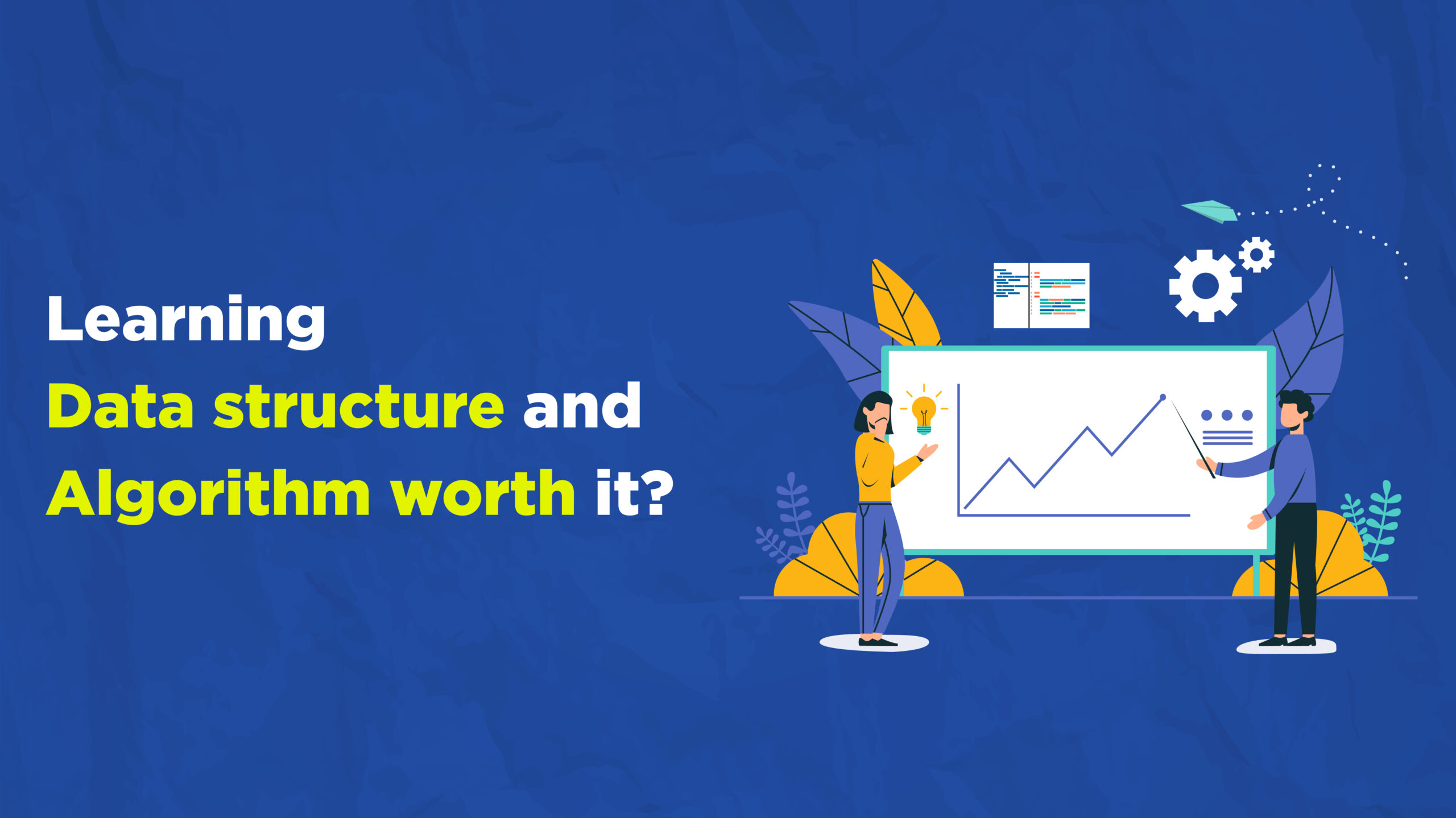Learning Data structure and Algorithms worth it?
Hey there, future coding whiz! Building awesome software is all about working with data, and data structures are the secret sauce that keeps it organized and efficient. It might seem like a big brain workout at first, but trust me, anyone can learn them with the right plan and a curious mind. Let’s dive in together and unlock the world of pro-level development through the magic of Data structure and Algorithms! (We got this!) Why Data Structure Matter Before diving into the intricacies, let’s understand why data structure and Algorithms are crucial: Efficient Data Management: Data structures provide efficient ways to organize, manage, and store data. Algorithm Optimization: They are key to optimizing algorithms, improving performance, and reducing complexity. Real-World Applications: Used in databases, networking, artificial intelligence, and more. According to a 2020 survey by HackerRank, 55% of hiring managers said that a strong understanding of data structure and algorithms is the most important factor in hiring developers. Step 1: Understanding the Basics Every great journey begins with a single step. Start by familiarizing yourself with the fundamental concepts: Variables and Data Types: Learn the different data types (integers, strings, etc.) and how they are used. Arrays: Understand how to store and access data in indexed collections. Linked Lists: Grasp the concept of nodes and pointers for dynamic data storage. Interactive Websites: Use platforms like W3Schools and Khan Academy for basic tutorials. Text Editors: Tools like Visual Studio Code or Sublime Text for hands-on practice. Step 2: Deep Dive into Core Data Structures Once you have a grasp of the basics, it’s time to delve deeper: Stacks and Queues: Learn about LIFO (Last In, First Out) and FIFO (First In, First Out) structures. Trees: Explore binary trees, AVL trees, and binary search trees. Graphs: Understand nodes, edges, and algorithms like depth-first search (DFS) and breadth-first search (BFS). Hash Tables: Discover the power of key-value pairs for efficient data retrieval. Visualization Tools: Use tools like VisuAlgo to visualize data structure and algorithms. Online Courses: Platforms like Coursera and Udacity offer specialized courses. Step 3: Practice, Practice, Practice Theory without practice is like a bird without wings. Engage with coding platforms: Consistency: Dedicate a set amount of time each day to practice. Challenges: Push yourself with progressively harder problems. Community: Join forums and groups to discuss solutions and strategies. Suggested Platforms: LeetCode: Offers a wide range of problems with varying difficulty levels. HackerRank: Provides challenges across different domains. CodeSignal: Features real-world interview problems. Regular practice on platforms like LeetCode has been shown to significantly improve problem-solving skills and algorithmic thinking. Step 4: Implement data structure and algorithms in Real-World Projects Nothing solidifies learning like real-world application. Start with small projects, then gradually tackle more complex ones: Personal Projects: Build a simple to-do app, a basic game, or a personal blog. Open Source Contributions: Contribute to projects on GitHub to gain collaborative experience. Hackathons: Participate in coding competitions to test your skills under pressure. GitHub: For version control and collaboration. Project Management Tools: Trello or Jira to manage tasks and milestones. Contributing to open-source projects can significantly enhance your data structures and algorithms skills and improve your chances of getting hired. According to a survey by GitHub, 94% of respondents said that involvement in open source helped their careers. Step 5: Learn data structure and algorithms Alongside Data structures and algorithms go hand in hand. As you get comfortable with data structures, start learning about algorithms: Sorting Algorithms: Bubble sort, quicksort, mergesort. Searching Algorithms: Binary search, DFS, BFS. Dynamic Programming: Master the art of solving complex problems by breaking them down into simpler subproblems. Books: “Introduction to Algorithms” by Cormen, Leiserson, Rivest, and Stein; “Data Structures and Algorithms Made Easy” by Narasimha Karumanchi. Online Courses: Dsa by Skolar and other educational platforms. Step 6: Read, Watch, and Listen Stay updated and inspired by consuming content from experts: Books: Keep a library of essential readings. Online Courses: Regularly enroll in updated courses on platforms like Coursera, edX, and Udacity. Podcasts and Videos: Engage with content from educators and industry leaders on YouTube and podcast platforms. YouTube Channels: CS50 by Harvard, MIT OpenCourseWare. Podcasts: “Coding Blocks,” “Talk Python To Me.” Reading authoritative books and following structured courses can provide deeper insights into complex concepts and best practices in programming. Step 7: Stay Motivated and Passionate The journey to mastering data structure is challenging but incredibly rewarding. Here are some tips to stay motivated: Set Goals: Short-term and long-term goals keep you focused and driven. Celebrate Milestones: Acknowledge and celebrate your progress. Stay Curious: Continuously seek to understand the ‘why’ behind each concept. Goal-Setting Apps: Use apps like Todoist or Habitica. Learning Communities: Join groups on Reddit or Discord. According to a study by the American Psychological Association, setting specific and challenging goals can significantly boost performance and motivation. Learning data structure and algorithms? Learning data structures is a super cool way to level up your coding skills. It takes some time and effort, but trust me, it’s totally worth it. Just like any pro gamer, you gotta start at level 1, and that’s okay! The important thing is to keep at it. With some practice, you’ll be using these structures to solve tricky problems and write awesome code in no time. But data structures aren’t just about coding – they’ll turn you into a problem-solving whiz, a master thinker, and a code creator extraordinaire! So why wait? Dive in today – the programming world is waiting to welcome you with a high five! Read More Blog Here ➜ Explore Our Program ➜

